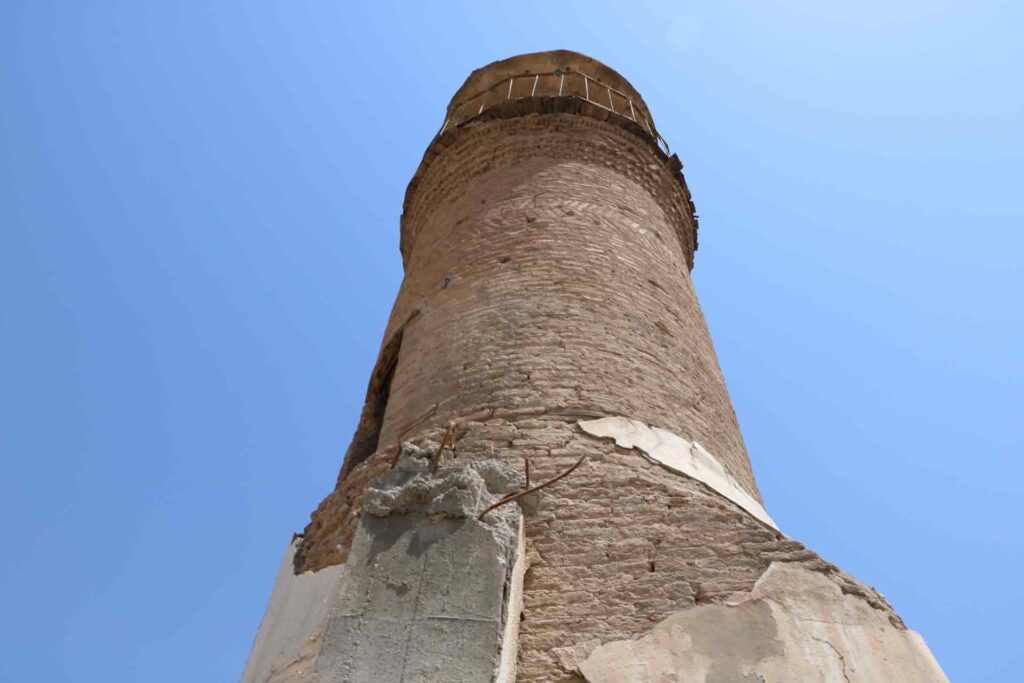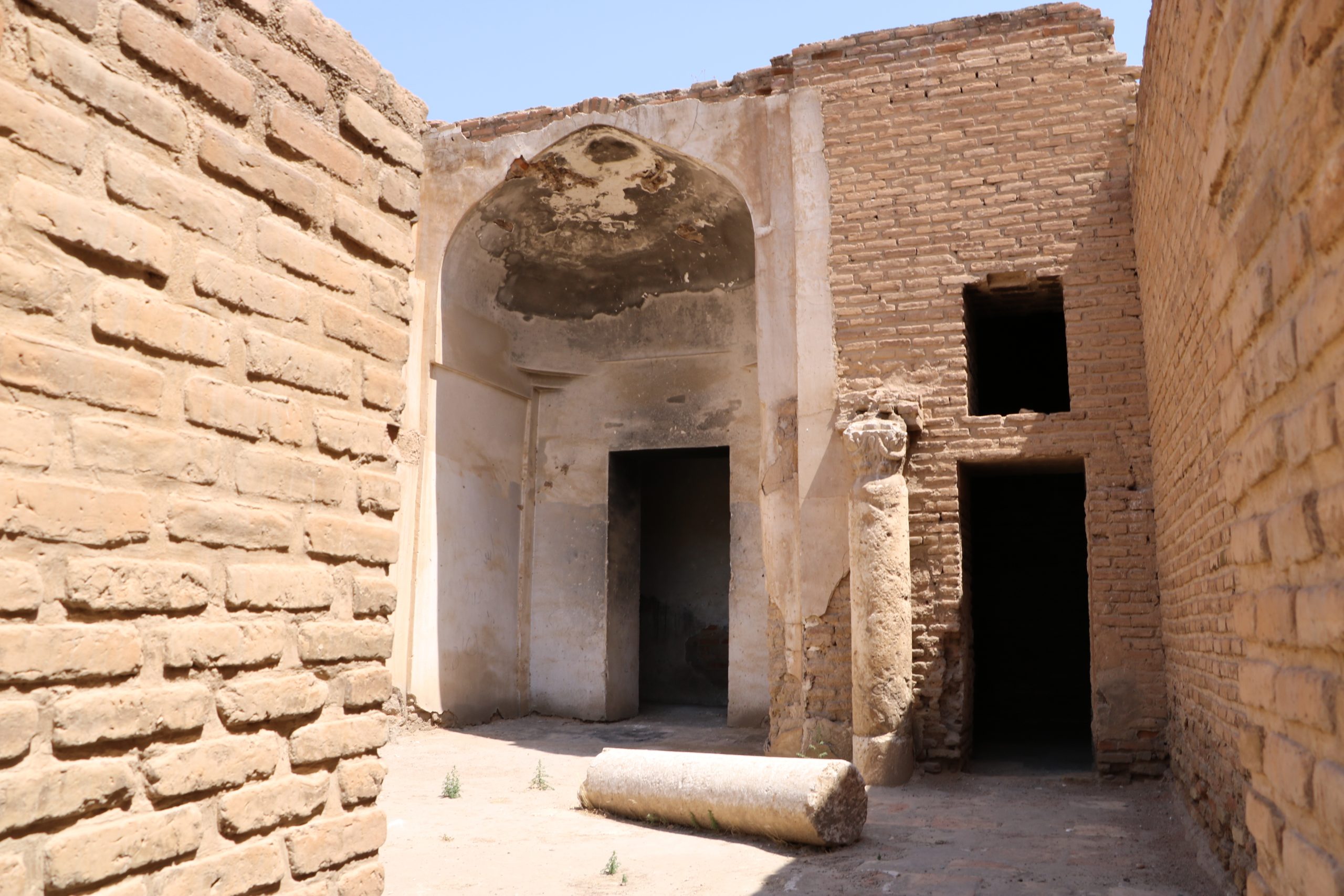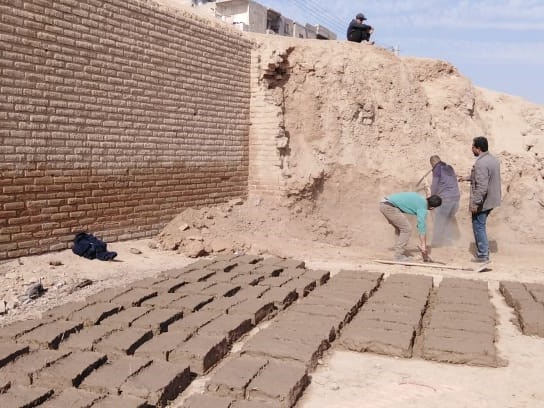Documentation and protection of heritage in Raqqa

Why Raqqa
The city was severely damaged especially during ISIL rule (2014-2017) and the bombardment of the Second Battle of Raqqa (June-October 2017) 90% of the inner city was destroyed. The participation of the local population in conservation, 13 paid volunteers, is essential for strengthening their ties to their local heritage.
The choice to work in al-Raqqa had several reasons: the local authority ACNES asked for support; the city and its surroundings represent an important and rich cultural heritage area in Syria, al-Raqqa is registered in the Tentative World Heritage Site list; the city was severely damaged especially during ISIL rule (2014-2017) and the bombardment of the Second Battle of Raqqa (June-October 2017).
Ultimately, 90% of the inner city was destroyed.
These ties were strengthened for other parts of the local population by the lectures, school lessons, distribution of 2000 leaflets and 6 bill boards as part of the heritage awareness program.
Besides, already 45 monuments and ancient buildings were surveyed of which 4 underwent actual emergency conservation and/or consolidation, which leaves much more work to be done.
Great Mosque of al-Mansur: Support of the open wall sections by the stepped brickwork of bricks or adobe bricks (1 brick thick) in the same format with backfilling by sand and blocking of the horizontal (and vertical) open wall crowns by a layer of reinforced lime mortar.
Danger of collapse during ongoing construction works!
Field of Work
The Great Mosque of al-Mansur
The Great Mosque of al-Mansur is one of the most famous mosques in the world. It was built in the 15th century by the Ottoman Empire. The mosque is located in the city of Qaraqosh, in the province of Qatariyya.

City Wall of al-Rafiqa and Baghdad Gate
City Wall of al-Rafiqa
Support of the open wall sections by the stepped brickwork of bricks or adobe bricks (1 brick thick) in the same format with backfilling by sand and blocking of the horizontal (and vertical) open wall crowns by a layer of reinforced lime mortar.
When only a separation/delamination of protecting wall shells, then an additional brick lining of the outer layer in at least 1 brick thickness with a backfill of sand, as well as stabilisation of the rear wall of mud bricks by spot injections with mortar.
Baghdad Gate
Attachment of the outer layer by pressing/injection with mortar (individual bricks being removed for this purpose) and subsequent temporary pressing by means of clamps
al-Hamidi Mosque
The minaret of the Al-Hamidi Mosque Stabilization of the condition by means of a steel corset of angles and tension rods or straps encompassing the rectangular base of the minaret; in addition, the cracks are filled by grouting and a safety fence is erected.
Danger of collapse during ongoing construction works!
Qasr al-Banat
support of the open wall sections by the stepped brickwork of bricks or adobe bricks (1 brick thick) in the same format with backfilling by sand and blocking of the horizontal (and vertical) open wall crowns by a layer of reinforced lime mortar.
Covering of fountain with a layer of sand and securing of important rubble, such as fragments of columns of stone within the fountain etc.
The Outcome
45 Surveys
4 Survey Maps
48 Surveys Places
Check Our Catalogue
Click Here To Download The PDF FIle
PDF CataloguePhotography & Social Media
All the project activities (lectures, school visits, billboards, hand out leaflets, survey tours, emergency conservation) have been photographed on the project website and the project Facebook page.
Training
at The 8-day training (16-26 Nov 2020) for 7 female and 13 male local professionals was divided in 4 Modules:
- The Raqqa Built Heritage
- Building Documentation
- Pathologies and Damage Assessment
- Emergency interventions.
In the morning 4 hours were spend on theory and in the afternoon 4 hours to practice in the field.
Several PowerPoint Presentations for the theoretical part were developed.
All material was offered in both English and Arabic.
All participants received a certificate of completion at the end.
Awareness
10 Heritage awareness lessons were given at primary and secondary schools.
Two Of these activities held covered the connection between tangible and intangible heritage, the other 8 covered different subjects of tangible heritage.
As part of the heritage awareness program 10 lectures were held.
Six On intangible heritage subjects and 4 on tangible heritage.
In total one hundred people were reached.
Quotes
The truth is, after the end of the [training] course and your continuation of the online work, it was a tremendous work and the course, frankly, for the first time [a training] took place in Raqqa. Like this one deals with how to preserve the sublime architectural heritage and I hope that everything is implemented on the ground and [that] the journey will be completed by restoring the archaeological remains and another training course [will take place] dealing with the immaterial heritage, for Raqqa is a rich sea … I repeat my happiness and love, and I convey to you the thanks and happiness of the people who interacted with you ... your work is heart-warming and I wish our young women and men much support... Thank you and love.
As for the awareness raising campaign in schools, they found a great turnout by the students …because they …were not aware of how many archaeological sites [there were] in the city of Raqqa and what archeology and tangible and intangible heritage is. The Education Committee also asked the Roya team to expand these campaigns to include all schools in the city…[Moreover] this part of the awareness raising campaign was launched for the first time in the city of Raqqa, as it demonstrated a wide public presence from the city's residents.’



